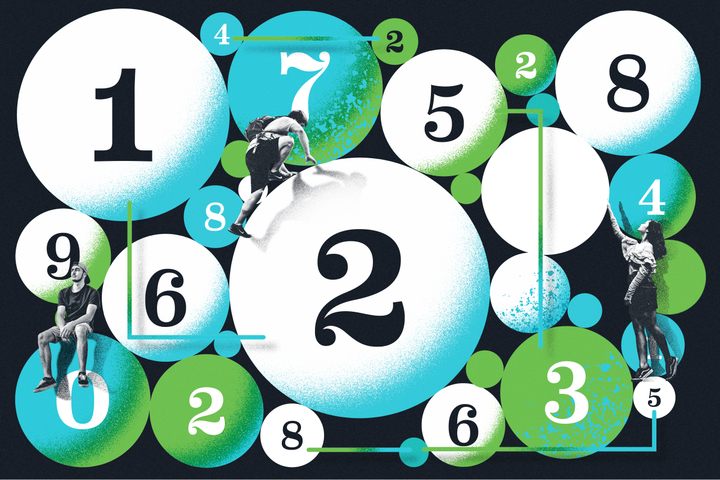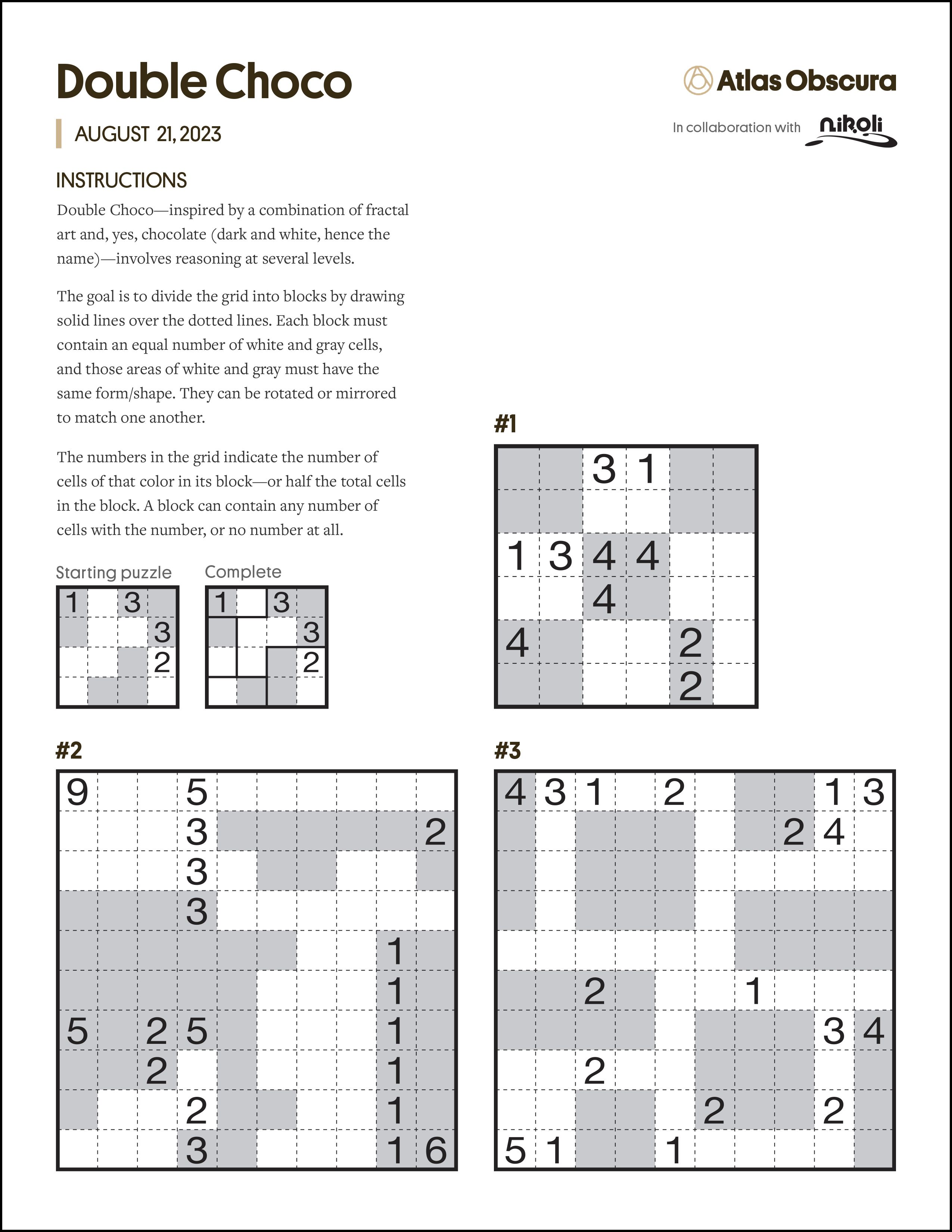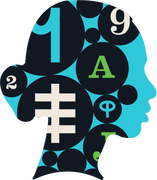
Puzzle Monday: Chocaholic
Editor’s Note, November 2024: Thanks for checking out our puzzle archive! While the online version of this puzzle is no longer interactive, we suggest downloading the PDF, available below. You can find other archived puzzle PDFs available for download here.
Among our crosswords and other puzzles, we’re featuring logic challenges from Puzzle Communication Nikoli, a cult-favorite puzzle publication from Japan. A PDF of the puzzle, as well as the solution, can be downloaded below.
Many of the challenges in Puzzle Communication Nikoli, Japan’s influential publication of logic puzzles, have been around for a while. But readers and puzzle enthusiasts are always submitting new ideas. Some get published, and among those some pick up enough fans that they earn a place in the regular puzzle lineup. Double Choco is the most recent addition to that lineup that we’ve featured in Atlas Obscura. It was created in 2018 by a reader with the pseudonym Airplane, who was a new Nikoli reader at the time.

Airplane was interested in grid puzzles that involve shapes and resolve to recognizable images, according to Nikoli president and puzzle creator Yoshinao Anpuku. He was also inspired by fractal art, or art involving geometric structures that repeat at small and large sizes. The resulting puzzle, Double Choco, isn’t quite fractal art, but the idea of repeated, connected shapes and patterns runs through it.
Airplane named the puzzle Double Chocolate, which was shortened slightly by the editors, in reference to dark and white chocolate. The two-color arrangement distinguishes puzzle grids from others in Nikoli’s pages, and often creates pleasing symmetries (as seen in Puzzle #3 below).

Solving a Double Choco involves reasoning at several levels. The goal is to divide the grid into blocks by drawing solid lines over the dotted lines. Each block must contain an equal number of white and gray cells, and those areas of white and gray must have the same form/shape. They can be rotated or mirrored to match one another. The numbers in the grid indicate the number of cells of that color in its block—or half the total cells in the block. A block can contain any number of cells with the number, or no number at all.

Stumped? Download the solutions!









Follow us on Twitter to get the latest on the world's hidden wonders.
Like us on Facebook to get the latest on the world's hidden wonders.
Follow us on Twitter Like us on Facebook